Way Out: Lost in London
London, England – Let’s say you’re lost. Let’s say you’re in a foreign country. Add in some rain. Throw in jet lag. Forget the map you’ve already checked. Do something most guys don’t do: ask directions. At least here they speak English, right? But it’s me with the funny accent.
“Oh, God,” one of the two men said as I asked if I could ask a question.
“Which way is Marble Arch Station?”
 “Go back down that way. And don’t turn. It’s maybe 15 minutes.”
“Go back down that way. And don’t turn. It’s maybe 15 minutes.”
“Don’t turn,” I repeated, but they both had already crossed the intersection – without looking back at me, the poor lost soul on the rainy streets of Westminster.
Hyde Park Mansions, Cravens Road, Bishops Bridge, Sussex Gardens – the names swirled in my head as I looked again at the map. I’d unknowingly gone exactly the wrong way as I left the hotel in search of Oxford Street. I’d already made a trial run that morning down Edgware Road and was within two blocks of Oxford and all its shops, but it began sprinkling and I realized my umbrella was back in the hotel room. I turned back and vowed to take a different, more interesting route on my second attempt.
Bad idea – the one about taking the alternate route. Good idea – the one about the umbrella. But after almost an hour of trying to find Oxford and looking at Bishops Bridge rising into the air, where the hell was I?
Later, and after my question to the two gents, I found myself just as lost. A young man without an umbrella was trying to cross the street the same time I was. The traffic was endless. We both moved down the street to the intersection, and I asked, “Which way is Marble Arch Station?”
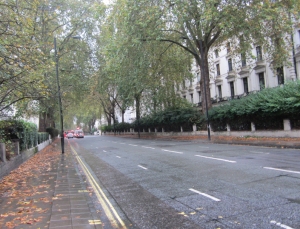 “The best way is to take the tube, it’s right down there,” and he pointed to an entry way to the London Underground a half block away. I followed him and we both ducked into the entrance and out of the rain. I bought a ticket, asking for the Edgware Road station, instantly giving up on the whole Oxford Street idea.
“The best way is to take the tube, it’s right down there,” and he pointed to an entry way to the London Underground a half block away. I followed him and we both ducked into the entrance and out of the rain. I bought a ticket, asking for the Edgware Road station, instantly giving up on the whole Oxford Street idea.
“Go down to Platform 1,” the lady behind the glass said. “Then take the circle and go to Edgware.” Little did she know I had already been going in circles. Asking directions even to Platform 1 I felt a fool. I stepped onto the subway car, the recording shouting, “Mind the gap!”
Within seconds I was gone – at least away from Lancaster Gate, which is where I was but didn’t know it. I asked the young girl sitting next to me for help. She got out her own map of the Tube and told me to get out at the next station and take the Central Line. “Queensway,” the conductor said over the PA system. Suddenly I was out of the car again as the young girl gave an open palm, side-to-side wave as if to say, “Whatever.” She was very helpful though. In fact, she had saved me.
I followed the signs to the Central Lines, green and yellow life lines that would take me back to where I began this crazy journey. The recording came on as I boarded, “This line is a circle line to Edgware Road,” the announcement declared with that distinctive British clip as I sat down and watched the Queensway tube sign disappear along the age-old brick walls outside the train windows.
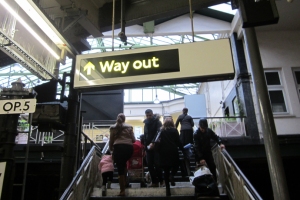 “The next stop is Edgware Road,” I heard. I stepped out. There was the sign I’d been looking for so long: Way Out. Yes, the Way Out.
“The next stop is Edgware Road,” I heard. I stepped out. There was the sign I’d been looking for so long: Way Out. Yes, the Way Out.
I slipped my tube ticket in the exit turnstile and the gates opened. I exited. Not bad. I emerged at street level and saw the hotel marquee within one block. It was pouring rain. But I had my umbrella and I was home. Safe.
When I next go to Oxford Street, I’ll walk.
Jersey Shore: Sweet Memories, Gone Forever
 The heartbreaking scenes of Hurricane Sandy’s devastation on the Jersey shore are almost too much to bear. New York, Manhattan, Virginia, the Carolinas, Rhode Island, Maryland, Delaware – the whole Eastern Seaboard – share in the disaster, surely the worst of its kind in modern history.
The heartbreaking scenes of Hurricane Sandy’s devastation on the Jersey shore are almost too much to bear. New York, Manhattan, Virginia, the Carolinas, Rhode Island, Maryland, Delaware – the whole Eastern Seaboard – share in the disaster, surely the worst of its kind in modern history.
I’m married to a Jersey girl and have become familiar with the phrase “the Jersey shore.” In Texas, where I grew up, we went to “the beach.” But in New Jersey, Cherie went “to the shore.” And the Jersey Shore is the best there is. I’m not talking waves, swells, sets, surfing categories. I’m just saying for an outing to the ocean, the Jersey shore is it.
New Jersey takes abuse of all kinds from comedians, and particularly from New Yorkers – and that abuse is passed down to listeners who believe what they hear, even though these comedic images of Jersey are nothing more than fiction. In reality, New Jersey is a beautiful state, and the Jersey shore in particular is a beautiful place, treasured not only by those from the state of New Jersey, but by New Yorkers and visitors from all over the world who come to enjoy the clean sandy beaches, the cold Atlantic, and the boardwalks that give the area its unique character.
Hurricane Sandy changed all that. The storm hit hard as it moved onshore at Atlantic City and moved on to wreak havoc for 500 miles in several directions. Boardwalks disappeared, 80-mph winds and torrents of sand inundated picturesque seaside communities.
 So when you hear about the “Jersey shore,” understand that it holds a special place in people’s minds: fun at the ocean, romantic boardwalks lit up at night with roller coasters and ferris wheels, the smells of foods of all kinds being prepared. A day at the shore, sadly, won’t be the same for quite a while.
So when you hear about the “Jersey shore,” understand that it holds a special place in people’s minds: fun at the ocean, romantic boardwalks lit up at night with roller coasters and ferris wheels, the smells of foods of all kinds being prepared. A day at the shore, sadly, won’t be the same for quite a while.
Snorkeling Tip Number 131: Learn How to Swim

 Maroma Beach, Quintana Roo, Mexico – On a sunny day, the Caribbean would beckon. Visibility would be good to a hundred feet or more. The Palancar Reef, one of the world’s premier diving and snorkeling areas, is a short boat drive away. But today it’s pouring – tropical rain. Drenching rain. Thunder in the distance. Lightning strikes visible on the beach to the north. Rain pours through the thatched roof of the palapa.
Maroma Beach, Quintana Roo, Mexico – On a sunny day, the Caribbean would beckon. Visibility would be good to a hundred feet or more. The Palancar Reef, one of the world’s premier diving and snorkeling areas, is a short boat drive away. But today it’s pouring – tropical rain. Drenching rain. Thunder in the distance. Lightning strikes visible on the beach to the north. Rain pours through the thatched roof of the palapa.
“Okay, time to go,” says the captain. “Everybody with a purple wrist band follow me.” He leaves the palapa, wades through the running water, and heads for the boat. “And please take off your shoes before you get in the boat, okay?” More thunder.
We huddle below deck in a cramped, humid compartment not quite big enough for all of us. But we’re all in there. The captain sticks his head in. “We’re taking off now.”
 The pilot behind him, in a yellow slicker and barefooted, holds the wheel steady as we leave the dock.
The pilot behind him, in a yellow slicker and barefooted, holds the wheel steady as we leave the dock.
At the dive location, we gather topside for “instructions” from the captain. “First, has anyone not snorkeled before?” Several people, amazingly, raise their hand. “This is a snorkel.” The captain is holding up one for everyone to see. The rest of the instructions take maybe twenty seconds. “Okay, who here cannot swim?” Again, amazingly, a couple of people raise their hands. “Okay, I’ll have a life ring with me in the water,” the captain says. “You two hold onto the ring. Okay, is everybody ready?” We begin jumping into the dark murky water.
Within minutes we’re strung out a hundred meters across the ocean and, because of the strong current, we’re also swimming for our lives. The captain dives down to show us a lobster. The closest snorkeler to him kicks his fins, creating a sand storm. Visibility: zero. More swimming for our lives. The current gets stronger. It’s wise to keep up with the captain, whose bright yellow flippers are about the only visible thing underwater. The two people who can’t swim are holding onto the life ring.
We swim (furiously) back to the dive boat. “Okay, let’s go to a second location.” The captain looks at me for reassurance that his idea is a good one. I nod toward a sister dive boat behind us, driving rain making her appear like a ghost ship in distress. She’s barely visible. Diesel fumes and smoke swamp our view as we pull away.
At the second location, more currents, more extreme swimming (forget snorkeling). Nobody cares about the fish or the lobster or the reef. Crackling thunder splits our ears as we surface momentarily. Again, we’re strung out across open water. The captain is yelling at the laggards. It’s time to reboard.
 On the cruise back to the dock, no one speaks. The captain shows us his tip jar. He thanks us for coming. The sister boat behind us has disappeared.
On the cruise back to the dock, no one speaks. The captain shows us his tip jar. He thanks us for coming. The sister boat behind us has disappeared.
Best Beaches: Waikiki, Oahu
 Honolulu, Hawaii – With Diamond Head sitting quietly in the distance and with the spirit of Duke Kahanamoku always present, Waikiki Beach is one place where your feet should be – at least once in your life.
Honolulu, Hawaii – With Diamond Head sitting quietly in the distance and with the spirit of Duke Kahanamoku always present, Waikiki Beach is one place where your feet should be – at least once in your life.
Eternally famous in films and books and songs, Waikiki withstands the hustle and bustle of downtown Honolulu, which is literally a stone’s throw away. Stroll the shops, sample a Mai Tai in a hotel lobby bar, and then simply cross the street and you’re on the beach at Waikiki. People from all over the world spread their towels and enjoy the beautiful view of the Pacific Ocean lapsing up to the shore. Surfers bob up and down, waiting for a gentle wave – practically the only kind you’ll find at Waikiki. Serious boarders head out to the North Shore or Pipeline or any of the dozens of beaches further away from Honolulu to catch the real waves.
Meanwhile back at Waikiki, more Mai Tais are prepared, more burgers are cooked at Duke’s – a fabulous bar and restaurant overlooking the central part of the beach where the Waikiki Beach Boys – a service group – will take you out in their outrigger canoes. Or give you a surfing lesson, teach you how to paddle board, orprovide you with their other services that include burial at sea.
 But it’s too soon for that. Burial at sea? Maybe later. Right now, wade into the Pacific. You’re already here at one of the best beaches in the world: Waikiki.
But it’s too soon for that. Burial at sea? Maybe later. Right now, wade into the Pacific. You’re already here at one of the best beaches in the world: Waikiki.
Greetings from Asbury Park: On the Boardwalk
 Asbury Park, NJ – Cherie and I tripped through here last summer. She’s a Jersey girl. Used to pay fifty cents to see Springsteen and the E Street Band at the Stone Pony before they made it big. For me, finally making it to Asbury Park was many moons too late. Still, I had to smile walking along the boardwalk. All of those lyrics by Springsteen came back to me. “Kids huddled on the beach in the mist…”
Asbury Park, NJ – Cherie and I tripped through here last summer. She’s a Jersey girl. Used to pay fifty cents to see Springsteen and the E Street Band at the Stone Pony before they made it big. For me, finally making it to Asbury Park was many moons too late. Still, I had to smile walking along the boardwalk. All of those lyrics by Springsteen came back to me. “Kids huddled on the beach in the mist…”
Out on the beach a few families hung out, a rocky pier jutted out about 50 yards into the cold blue Atlantic, and a lifeguard stood nearby. At the end of the boardwalk was a long, red-brick building stretching from Ocean Avenue to the edge of the shore – the Asbury Park Convention Hall. We walked inside: shops, a concert hall, posters announcing the coming concert featuring the Turtles and other ‘60s rock groups, and a restaurant and bar.
A crowd gathered on the boardwalk to watch guys pound a sledgehammer and try to ring the bell at the top of the tall mark. Moan and groans. Nobody was coming close to reaching the top.
 The Stone Pony faces the beach in Asbury Park, NJ. A little bar in a little Jersey beach town. So simple, so beautiful. This is where it all began for Bruce Springsteen and the E Street Band a long time ago. The great Clarence Clemons, the band’s saxophonist, had died two weeks before. Pictures and posters and flowers lined the beach side wall of the Stone Pony on that cloudy Sunday afternoon in July. The Big Man, the big smile, the big sound – gone.
The Stone Pony faces the beach in Asbury Park, NJ. A little bar in a little Jersey beach town. So simple, so beautiful. This is where it all began for Bruce Springsteen and the E Street Band a long time ago. The great Clarence Clemons, the band’s saxophonist, had died two weeks before. Pictures and posters and flowers lined the beach side wall of the Stone Pony on that cloudy Sunday afternoon in July. The Big Man, the big smile, the big sound – gone.
Further down the boardwalk stood a fortune-teller’s shop. “You know the cops finally busted Madam Marie for telling fortunes better than they do…” I wish I had been here forty years ago.
Alcatraz: You’ll Want to Leave This Place
 The only thing to do at Alcatraz: leave. Quick.
The only thing to do at Alcatraz: leave. Quick.
With the success of the Fox TV hit “Alcatraz,” I kept thinking of the tour I took to the real thing a few years back. The show has the authenticity: the set is eerily similar. The cell blocks and the small cramped cells, the prisoners wearing the denim shirts and pants and heavy blue jean jackets, the guards wearing those familiar dark uniforms with the old style cop hats.
On that chilly summer afternoon in San Francisco, I went for the headset and tape recorder “walking tour.” But once I hung out on the island for a while, I wanted to get out of there. Real bad. There’s a bad vibe there, believe me.
Sure, it’s interesting. I was stunned to learn of the massacre, the shoot-out and the escape attempt in the library back in the 1950s.I saw the cell for the Birdman of Alcatraz, made famous by Burt Lancaster in the film of the same name back in the 60s. I went into the kitchen—a small simple place. In one cell, a dummy prisoner with a wig lies in bed as the tape describes the escape attempt that was the basis for the Clint Eastwood movie, “Escape from Alcatraz.”
 At the end of a hallway is a window that perfectly frames the San Francisco skyline a short distance away. You can hear people on party boats having a good time. What torture for the prisoners who lived there. Freedom – so close, yet so far away.
At the end of a hallway is a window that perfectly frames the San Francisco skyline a short distance away. You can hear people on party boats having a good time. What torture for the prisoners who lived there. Freedom – so close, yet so far away.
The tape ended. I walked around outside (another tribute to the show’s set: they’ve even got the steps outdoors perfectly matched to the real thing). The warden’s house is nothing but walls now. The landing dock is graffiti-covered with slogans from the American Indian takeover of the island back in the 1970s. The water laps up against the rocks, icey cold.
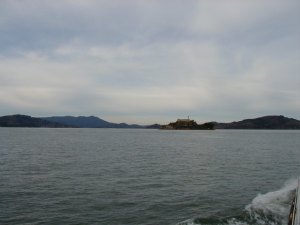 For some strange reason, I want to go back and take the night tour. Alcatraz is the place to go. And leave.
For some strange reason, I want to go back and take the night tour. Alcatraz is the place to go. And leave.
The Most Interesting Man in the World is Right
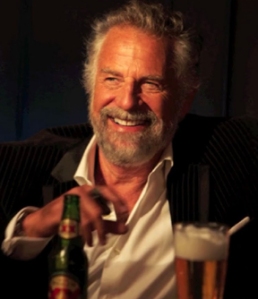 I was having breakfast with the most interesting man in the world. He put his fork down and looked at me seriously. “You know, my friend, I don’t always eat bacon. But when I do, I prefer Bacon.”
I was having breakfast with the most interesting man in the world. He put his fork down and looked at me seriously. “You know, my friend, I don’t always eat bacon. But when I do, I prefer Bacon.”
He was referring of course to Bacon, http://www.baconaustin.com/the restaurant in Austin. It’s just off South Lamar on 10th Street. Historic Castle Hill looms to the west, its old Austin charm unruffled. To the east is the new look of Austin: a 30-story condo tower jutting skyward in the downtown area. The restaurant itself is an old Austin throwback. A framed house out of the 1940s, this structure has been remodeled with beautiful wooden floors, big picture windows and lots of cozy tables and wooden chairs in the dining area. Flat screens broadcast from the walls.
I had the waffle and Cherie had the French toast. (The most interesting man in the world was sitting nearby and chatted with us briefly.) And was it ever delicious. My waffle had bits of hickory smoked bacon cooked into it. Angled slices of fresh banana stretched their way across the waffle, adding to the presentation and the flavor. Cherie’s French toast, crisscrossed with two strips of crisp bacon, looked even better. Freshly brewed mocha java steamed from our cups nearby.
 Jesse Fincher, the manager and someone we consider our unofficial fourth son, runs the place with charm. Breakfast, lunch and dinner are all served here. Vegetarian meals too. Salads. Beer and wine. Trivia contests are scheduled. South by Southwest music gigs will blow the place up come March 2012.
Jesse Fincher, the manager and someone we consider our unofficial fourth son, runs the place with charm. Breakfast, lunch and dinner are all served here. Vegetarian meals too. Salads. Beer and wine. Trivia contests are scheduled. South by Southwest music gigs will blow the place up come March 2012.
As we left, I noticed the framed poster on the wall advertising the Elvis Big Biscuit. Where else could the most interesting man in the world possibly have bacon?
Let’s Go Back: Mazatlan, Surfing and 1969
He has been a friend of mine since I was 19. An important friend, there at key moments in my life. I was a groomsman in his wedding.
The other day he called, but the news he had wasn’t good. He had lung cancer. Five rounds of chemo treatments, completed. “It’s under control, but I’ll never get rid of it,” he said.
 We traveled together with three other guys on the craziest Spring Break trip ever: 1969 to Mazatlan, Mexico, in an old 1955 Ford sedan with four surfboards strapped across the top. He was a great football player on the intramural fields at the university, playing for our “A” team.
We traveled together with three other guys on the craziest Spring Break trip ever: 1969 to Mazatlan, Mexico, in an old 1955 Ford sedan with four surfboards strapped across the top. He was a great football player on the intramural fields at the university, playing for our “A” team.
He went on to have a great career in engineering. Traveled the world: China, Venezuela, Iraq. Infrequent phone calls kept us sort-of up to date on where we were in our lives. I flew out to San Diego to visit him and his family back in the late 1980s. They later moved to Houston, their home town.
Life goes by too fast. All too fast. One day you’re 19, 20, 21. Then you’re 35, then 45. And you just hope that it doesn’t end with what my friend told me he has.
All the laughs and the good times dissolve as he gives me the news over the phone the other day. I appreciated him telling me. I just wish we could push “rewind” and go back – way back. To Mexico, the beach, the surf. It’s still there. Thanks, friend, my thoughts and prayers are with you.
Blue Hole: Swimming, Hiking, and Fun in a New Sustainable Park
 Discovering something new, especially in a beautiful setting, is always a treat. That happened recently when Cherie and I heard about a new hike-and-bike trail near the little town of Wimberley. We loaded up our mountain bikes and took the ten-minute drive to Winters Mill Parkway. Boom! There it was.
Discovering something new, especially in a beautiful setting, is always a treat. That happened recently when Cherie and I heard about a new hike-and-bike trail near the little town of Wimberley. We loaded up our mountain bikes and took the ten-minute drive to Winters Mill Parkway. Boom! There it was.
It’s part of a 126-acre park development that will include a sprucing up of the historic swimming hole in Wimberley, Blue Hole. Called Blue Hole Regional Park, it’s a project sponsored by the City of Wimberley and the U.S. Department of the Interior. This “sustainable site” also has partners like the American Society of Landscape Architects, the Lady Bird Johnson Wildflower Center at the University of Texas, and the United States Botanical Garden. That’s some pretty nice company.
Blue Hole, the famous swimming hole on nearby Cypress Creek, will get new bath houses for swimmers, but will still be limited to 150 people at a time. There’s already a great walking path that goes from the parking area on Winters Mill Parkway right to the swimming hole (a round trip walk is about 40 minutes). There’s a different path that parallels the parkway from Ranch Road 3237 to the intersection at Ranch Road 12 – about a three mile dash on a bike. You can walk this trail too.
 The completed park will have, in addition to the nature trails and playground areas, soccer fields and tennis courts. But there’s no giant destruction going on – those spaces were cleared back in the 1940s. Sure there’s big trucks and earth-moving equipment in there now, but only five trees were marked for removal.
The completed park will have, in addition to the nature trails and playground areas, soccer fields and tennis courts. But there’s no giant destruction going on – those spaces were cleared back in the 1940s. Sure there’s big trucks and earth-moving equipment in there now, but only five trees were marked for removal.
It’s been a beautiful surprise and a great spot for a cardio-workout. It’s a true Texas treasure! What’s up where you live?
Seals Need Sleep and the Beach is a Good Spot
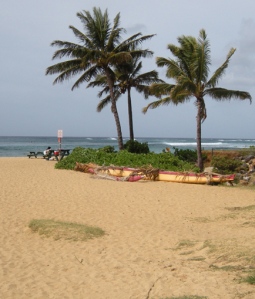 Poipu Beach, Kauai, Hawaiian Islands, October 2009 – Here at the tip of the island of Kauai, roosters roam the beaches, tourists take surf lessons and seals sleep through everything.
Poipu Beach, Kauai, Hawaiian Islands, October 2009 – Here at the tip of the island of Kauai, roosters roam the beaches, tourists take surf lessons and seals sleep through everything.
The natural current takes you gently from one end of the beach to the other as you snorkel about. A couple of wooden picnic tables on the sand, a lifeguard stand, and local families out for a bar-b-que dot the surroundings. Off to the left side of the beach, rocks stand guard on the oceanfront, making it difficult – and pretty senseless – to try to get in the water from there.
I as snorkeled offshore about 50 yards, I saw parrot fish bigger than any I had ever seen. Something bumped my left arm and I whirled around to see what was underwater that was so close. Oh! A giant sea turtle. She was beautiful and very close as she floated by me. Wow, I thought. Never had that happen before.
Back up on the beach, a protected Hawaiian seal snoozed away. A few ropes marked off her boundary. She didn’t care as she slept the hours away. Her friend showed up after a while, swimming back and forth and occasionally raising his head out of the water to make sure that was her. Finally, he hit the beach. The crowd gathered around the ropes. A sign nearby warned of the seals rather zesty mating habits and to stay back. “Give ‘em room” was the basic message. Still, people of all ages crowded around, video cameras rolling, kids looking and tourists gawking. The male seal started nudging his friend, trying to get her to wake up. A few barks were thrown in too. Finally she opened her eyes. “Oh, you,” she seemed to say and shut her eyes again.
Fishing with Gala in Costa Rica
Near Playa Flamingo, Guanacaste Peninsula, Costa Rica, April 2010 — The boat was small, maybe 14-feet long. Two-by-six inch pieces of lumber lay across the width of the boat for seating. Twisted pieces of rebar made for an interesting looking anchor, which sat at the bow of the boat. There was no deck, no canvas top, no windshield, just a completely open little skiff to take us out into the Pacific.
Our guide, Gala, was powerfully built, had on mirror sunglasses and wore a gold chain around his neck. Barefooted, he pushed the boat into the surf from Playa Conchal, hopped in and cranked the small outboard motor until it fired up. Soon he had to take a cell phone call. He talked rapidly in Spanish to the caller and laughed. We kept going into deeper water, on the way to catching red snapper.
We stopped after probably three or four kilometers. He began to cut up bait, using a sharp knife he had with him and using a two-by-six piece of lumber, similar to our seats, as a cutting board. He asked us questions about some English words, wanting to know more about how to speak English. He laughed a lot, baited our hooks and threw our lines overboard. Soon we were catching red snapper. It was an unforgettable day on the ocean. Nothing fancy. Just real.
Afterwards, we took the best of our catch in to a local restaurant, where our new friend, “Kevin,” grilled them up for us. A delicious way to celebrate!
Disappearing Trees
Ever been to No Trees, Texas? It’s actually a place. A city. People live there.
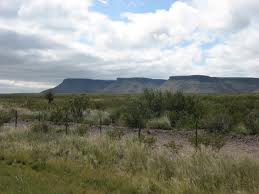 I ask because I drove from Central Texas to West Texas today. And as you go west, the trees begin to disappear. I didn’t go to No Trees, but soon after heading west from San Angelo, just past all those super-gigantic white windmills, I noticed that the trees…yeah, there weren’t any. Unless you count the mesquites. And even those were barely six feet tall. And, yeah, eventually they disappeared too.
I ask because I drove from Central Texas to West Texas today. And as you go west, the trees begin to disappear. I didn’t go to No Trees, but soon after heading west from San Angelo, just past all those super-gigantic white windmills, I noticed that the trees…yeah, there weren’t any. Unless you count the mesquites. And even those were barely six feet tall. And, yeah, eventually they disappeared too.
In fact, after a while as I zoomed along mile after mile after mile, there were not only no trees. There were no cars. No houses. There was some sand. And some stripped bare cotton fields. And lots of sun. And wind. Gusts up to 50 miles per hour had me gripping the steering wheel with both hands.
The trip started out beautifully. A sunny morning, lots of spectacular Texas Hill Country views as I left home between Kyle and Wimberely in Hays County. I manuevered slowly through the morning school zones in Dripping Springs, and traveled west through more spectacularly picturesque Hill Country. I crossed the bridge over the Llano River, passed up several really good bar-b-que stands in Brady (it wasn’t lunch time yet). And …well, that’s about when things started to change.
Traveling on west and northwest past Brady, one gets that old John Wayne western movie feeling. Like he might be out there riding along somewhere. Mesas and ranches and brush country provide the backdrop. And there’s not a soul around. At one point, I spotted a dozen horses gathered together near a flat-top mesa, but no riders in sight. Further west along the highway, the earth flattens out, and there’s nothing left but sun and wind. It gets a little lonesome out there.
Maybe that’s why the trees disappeared.





